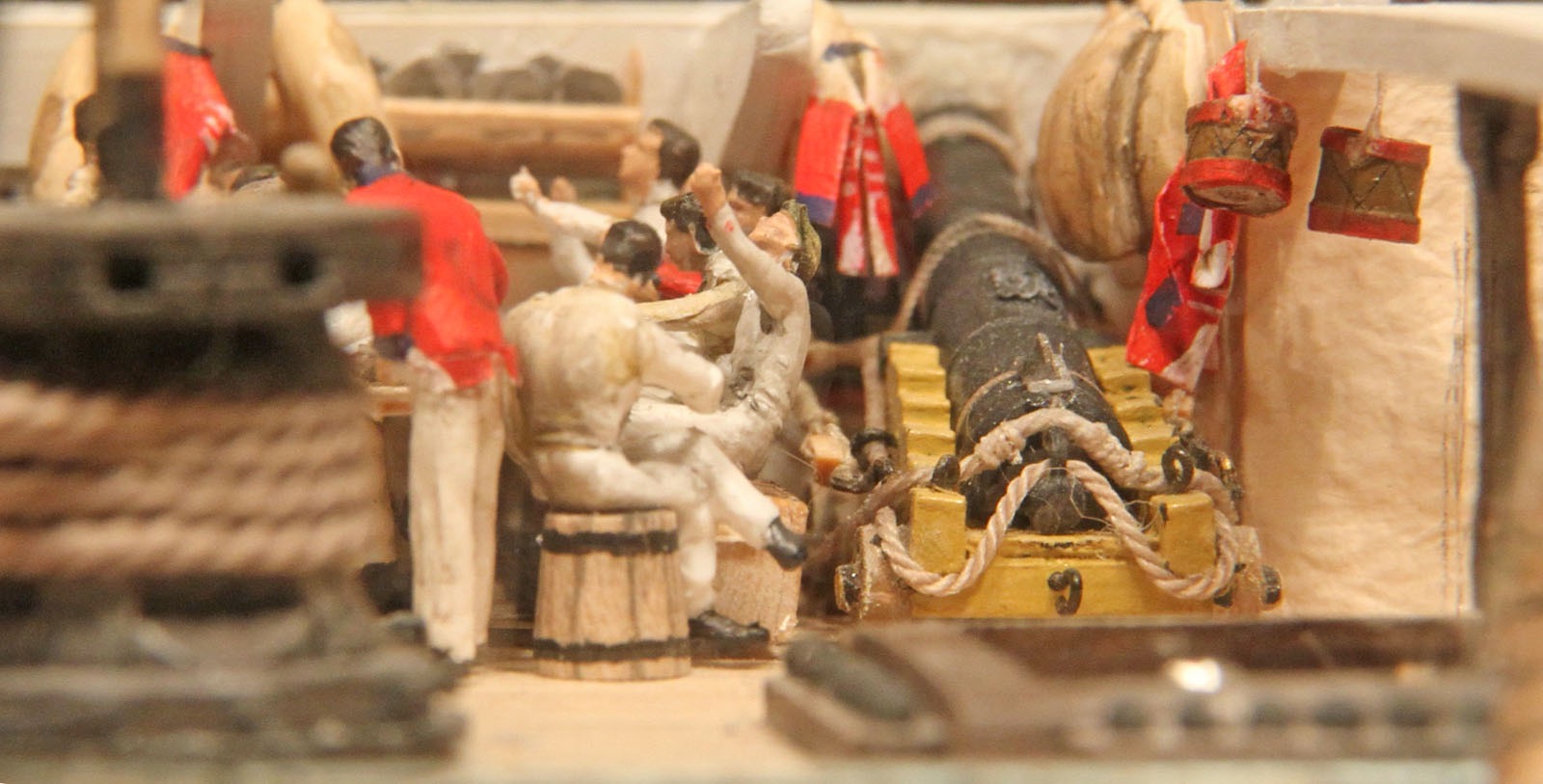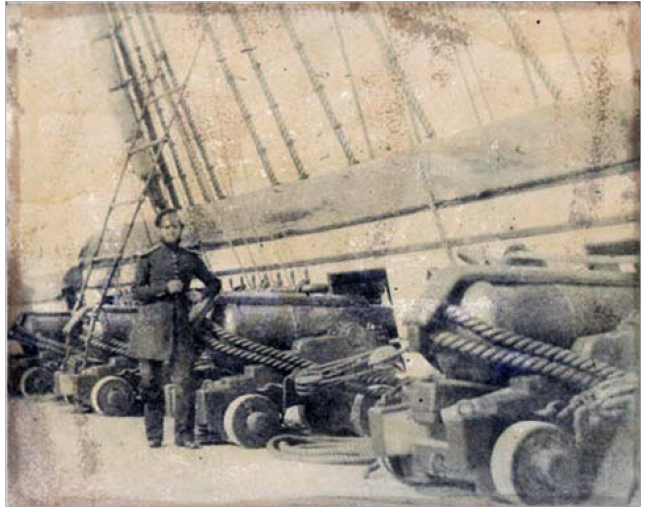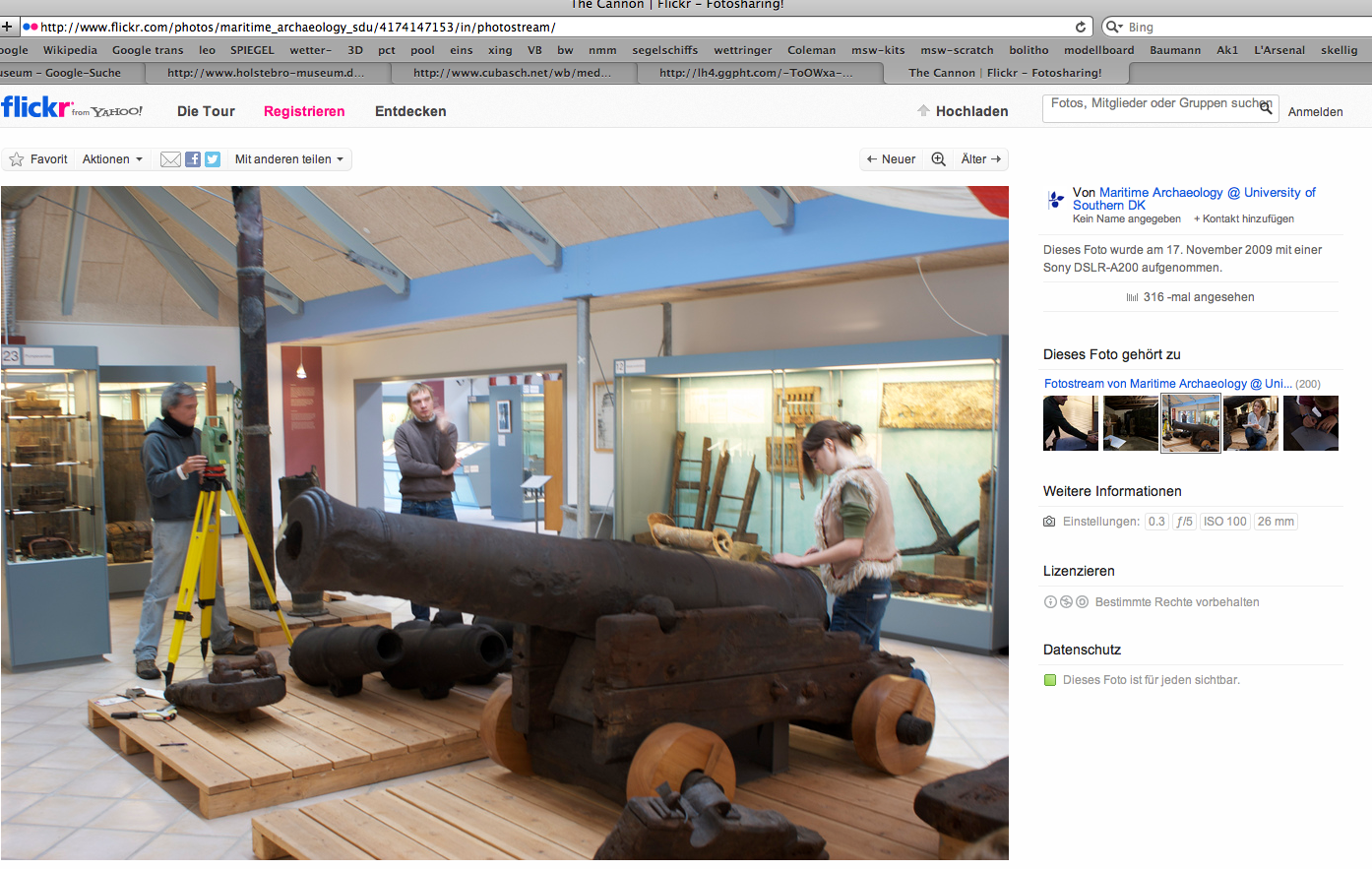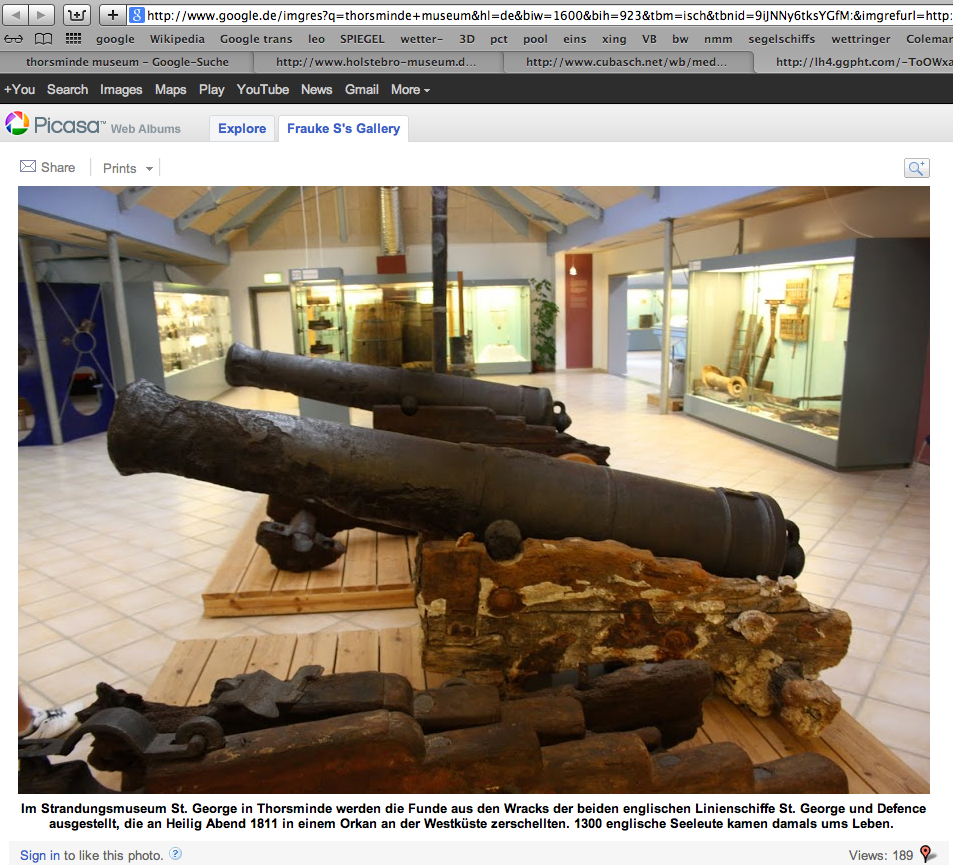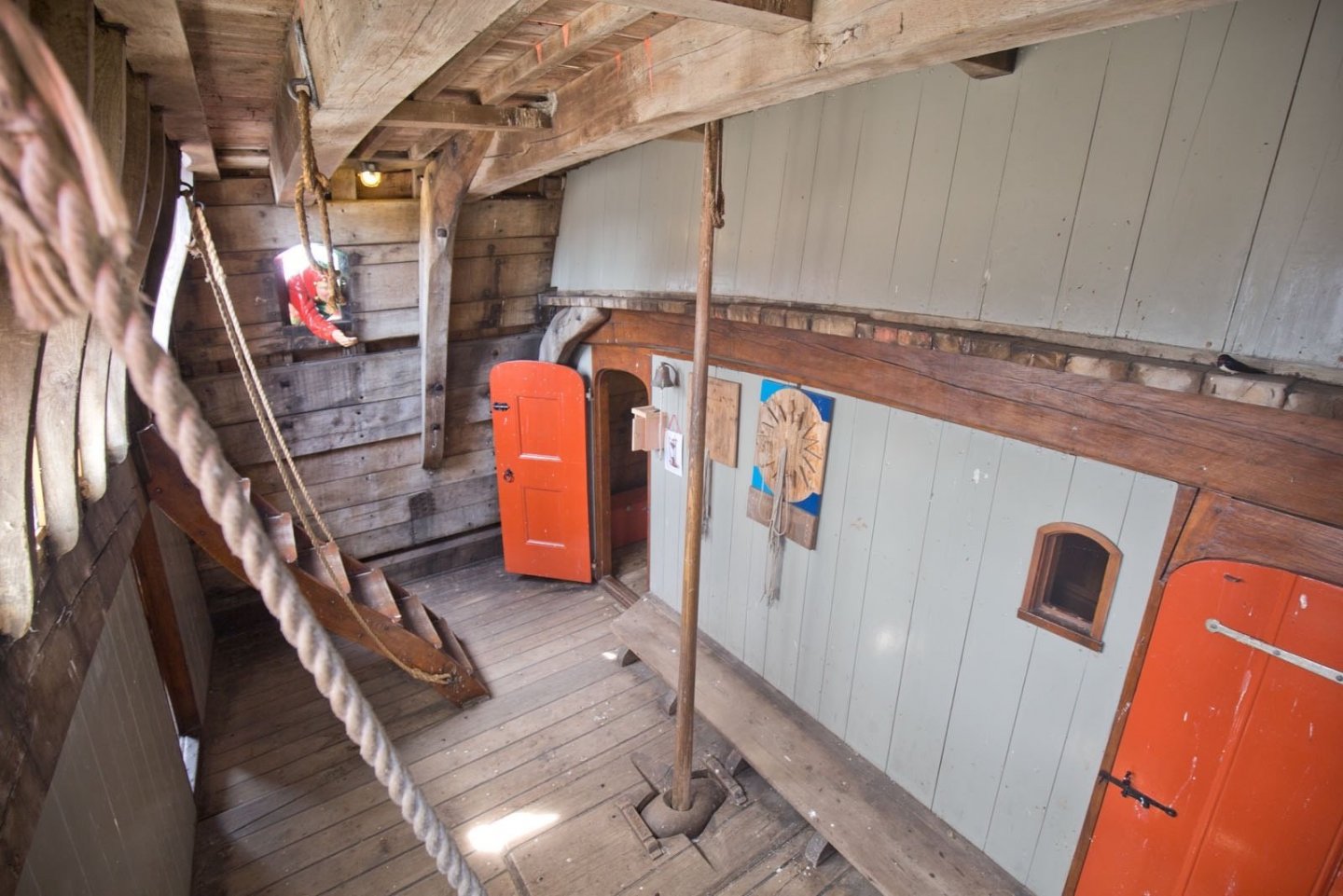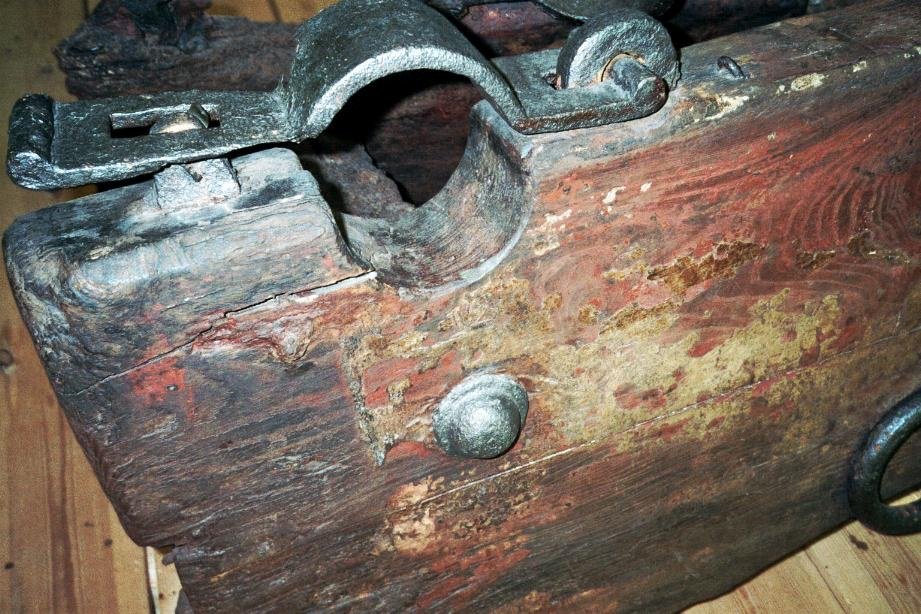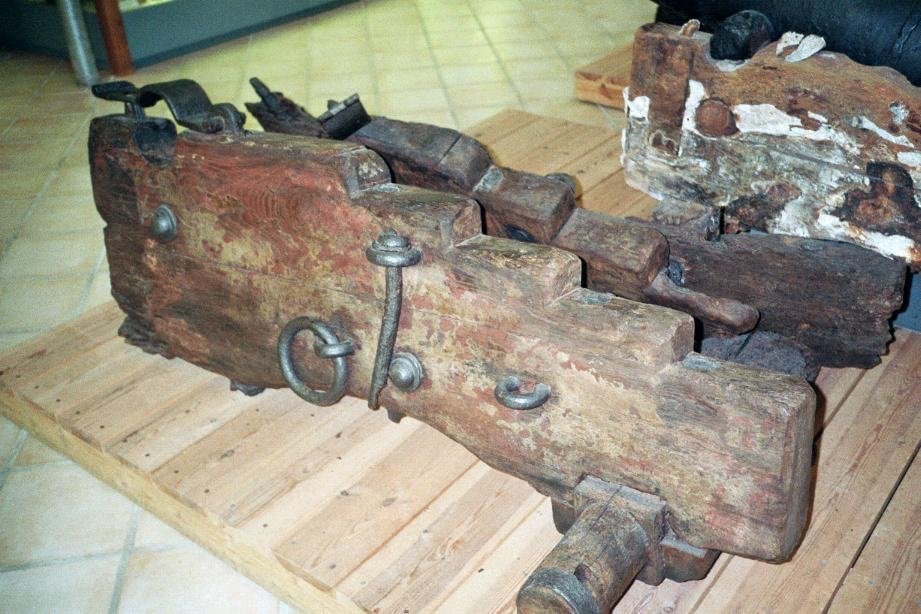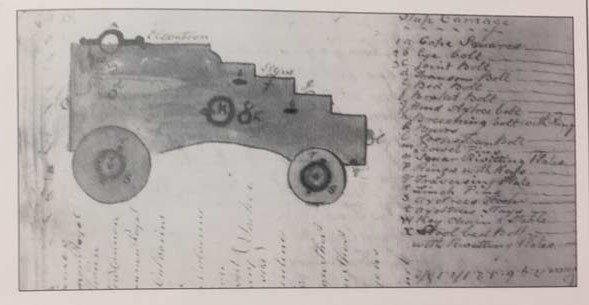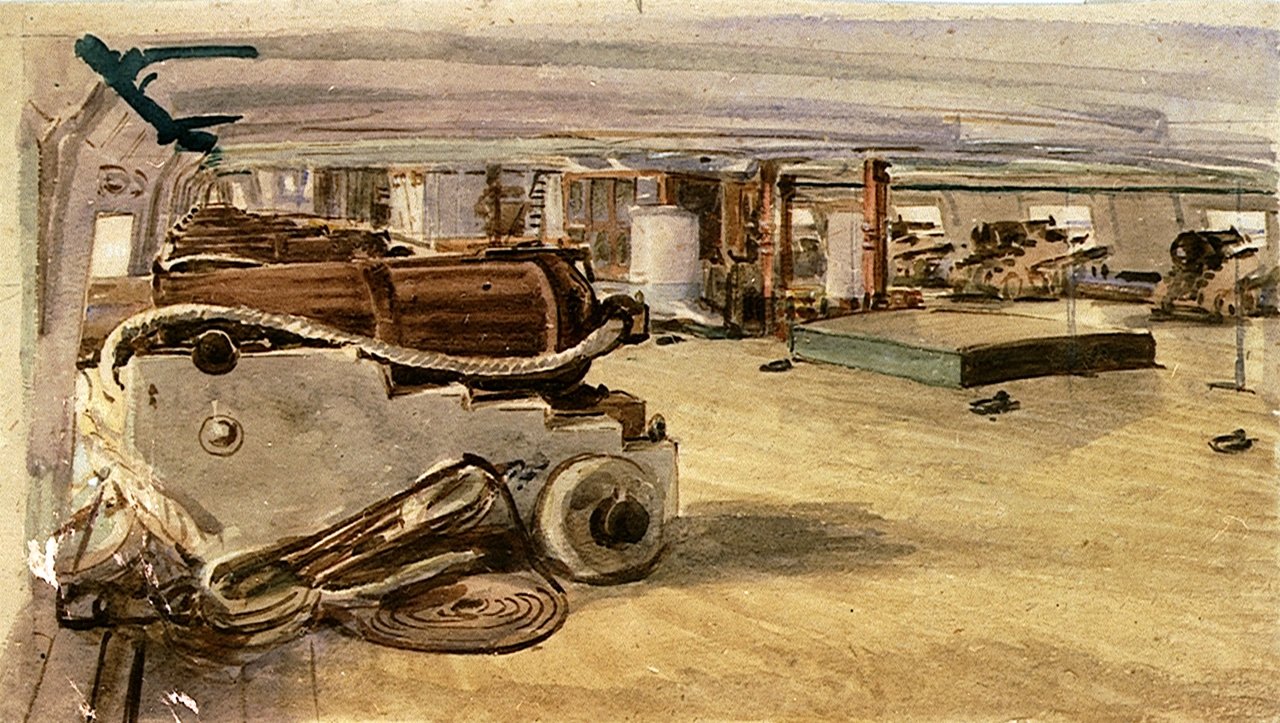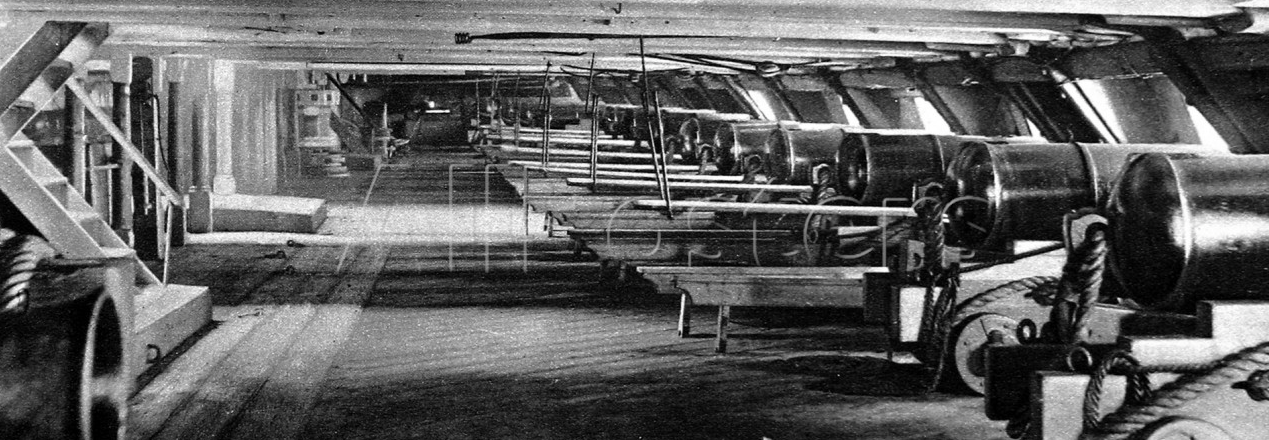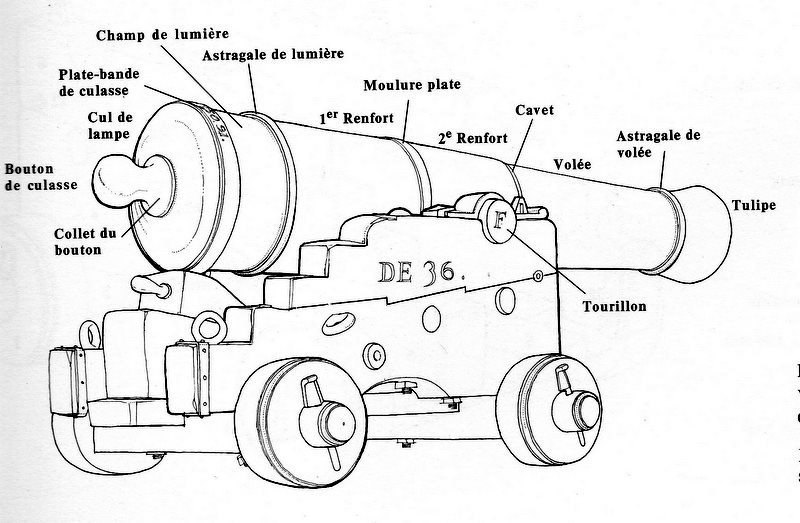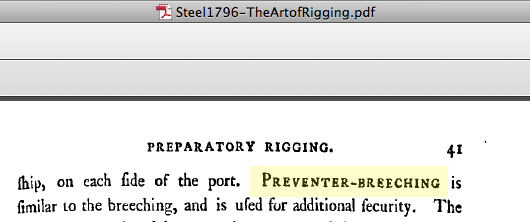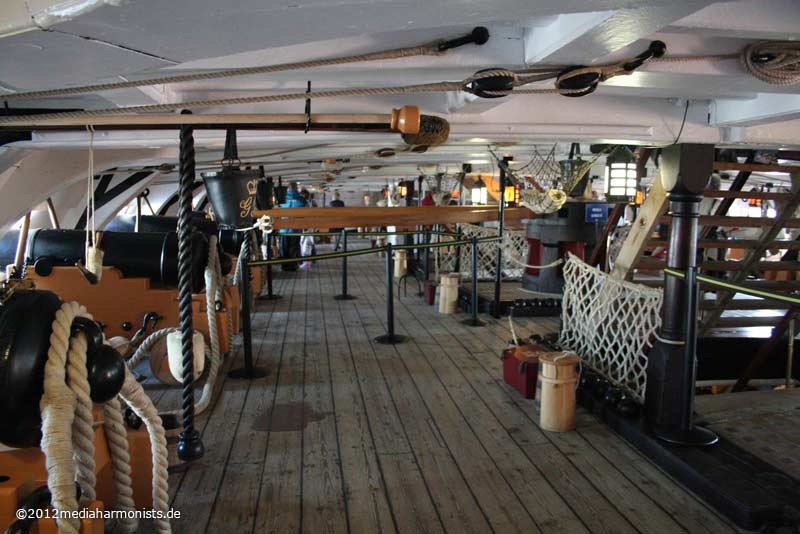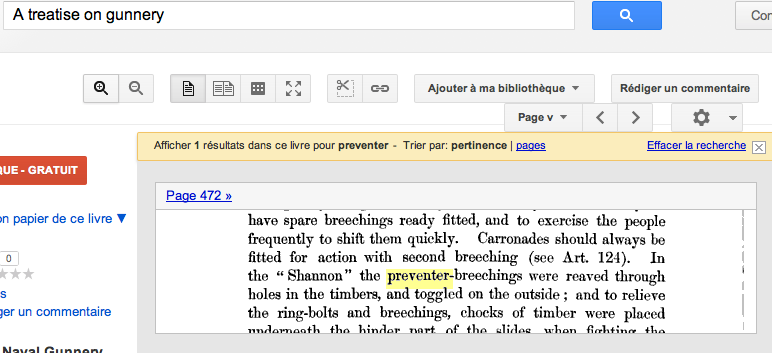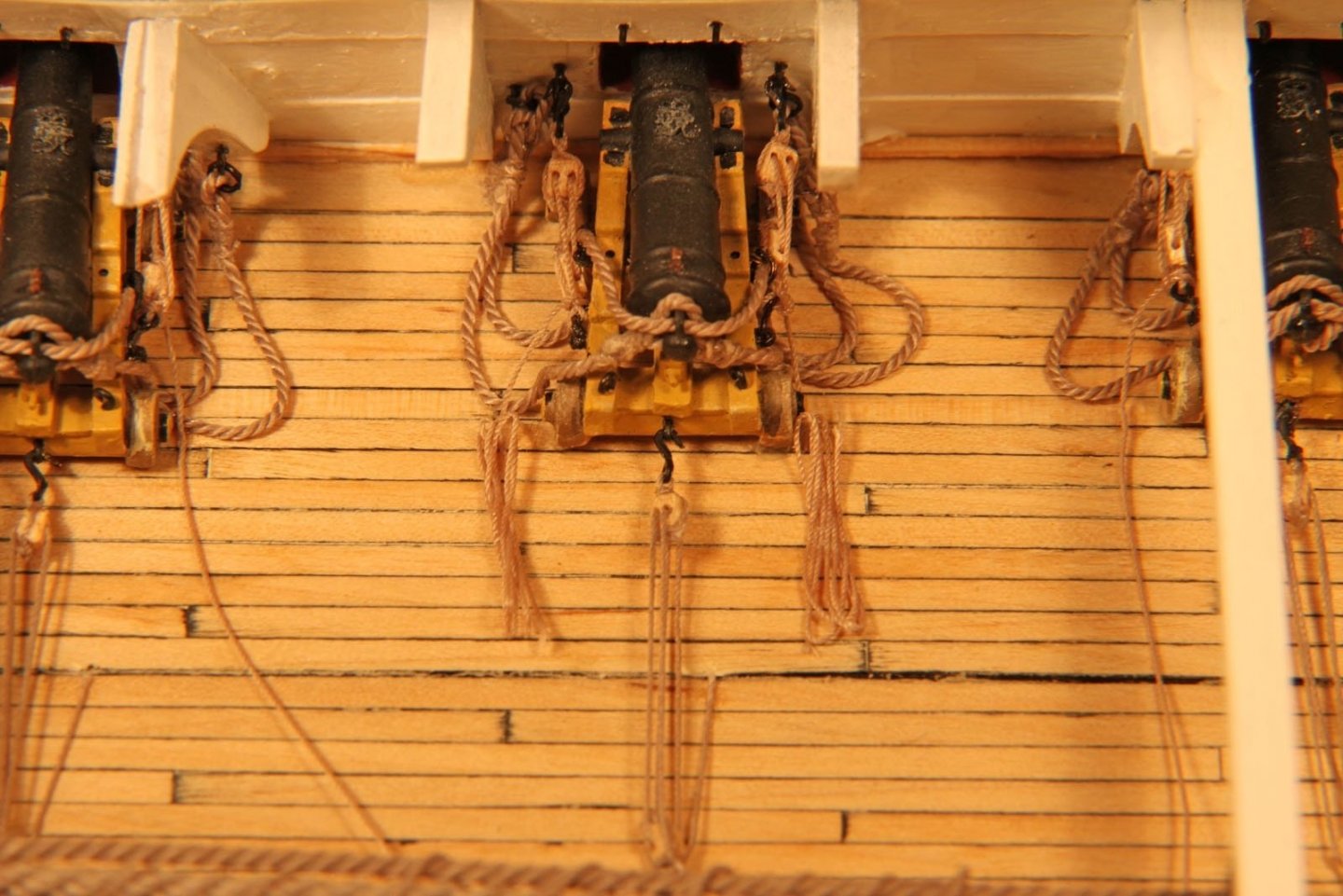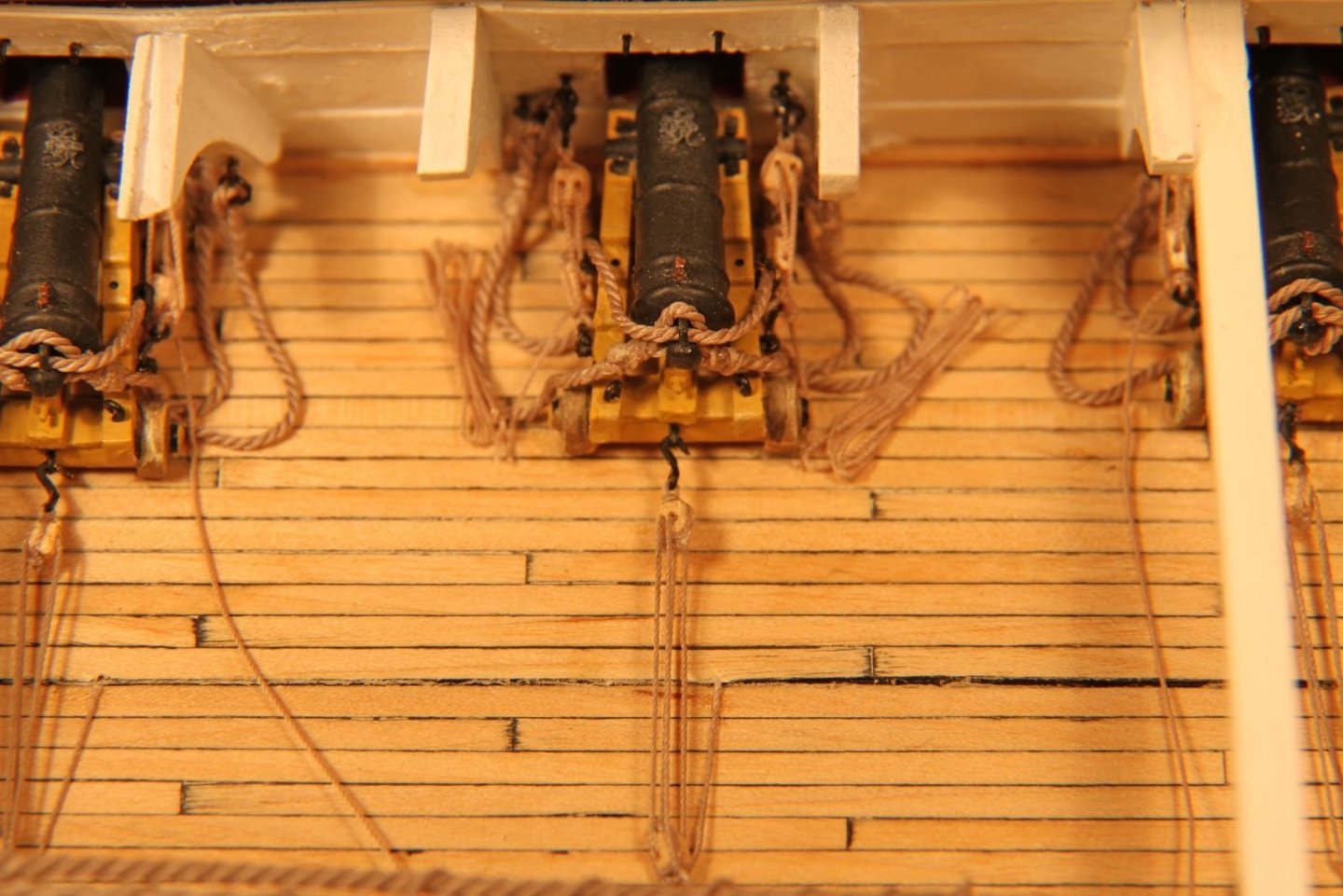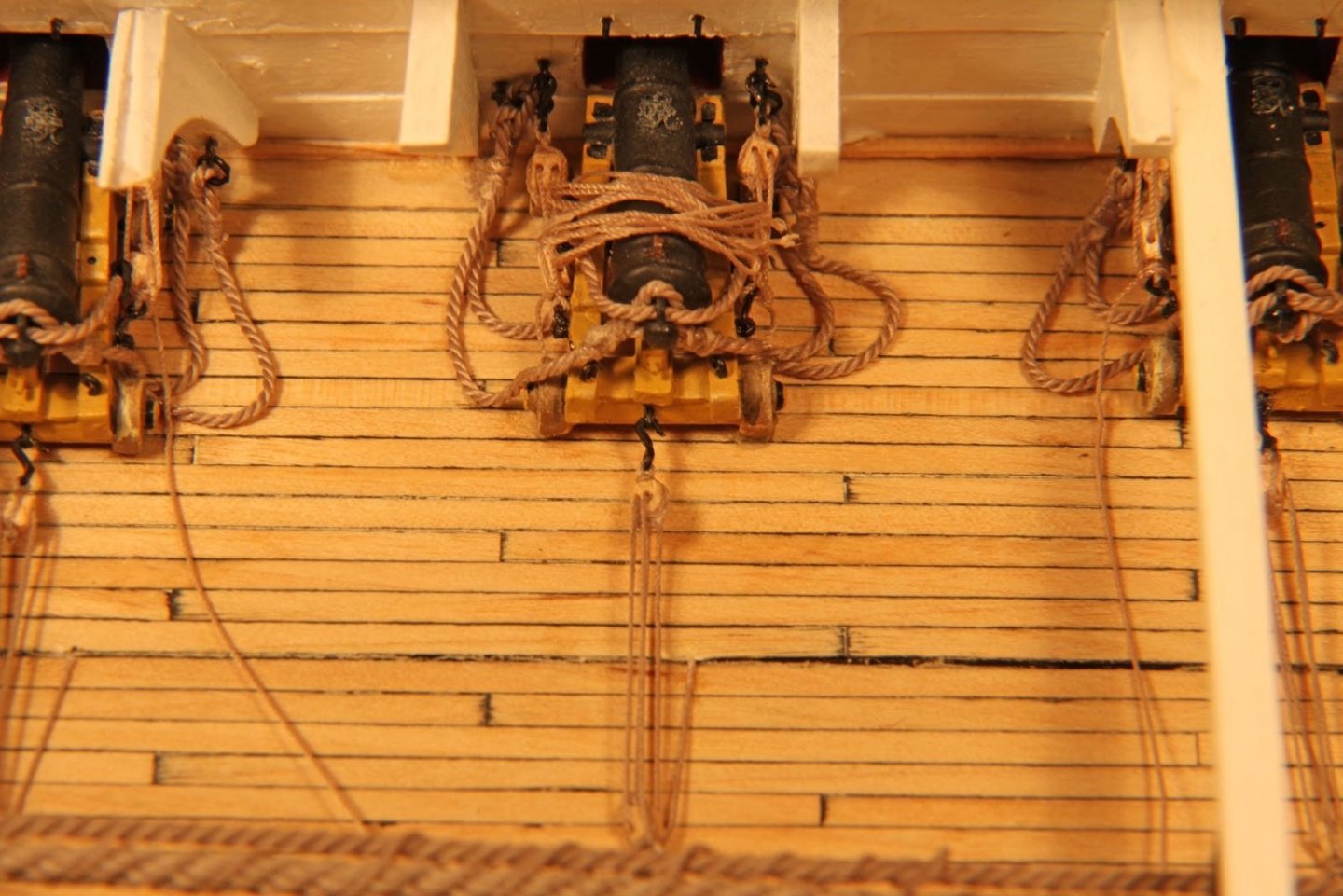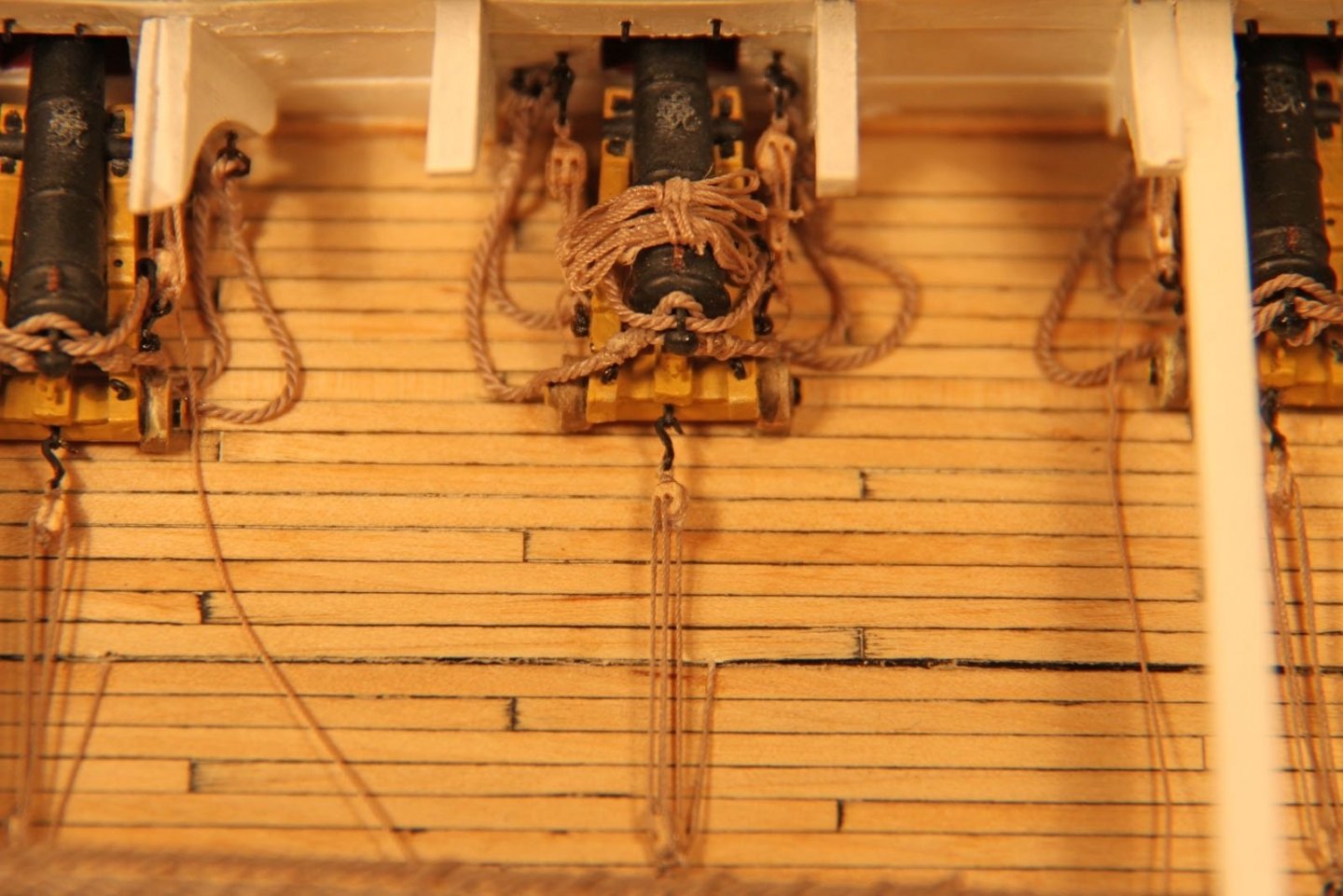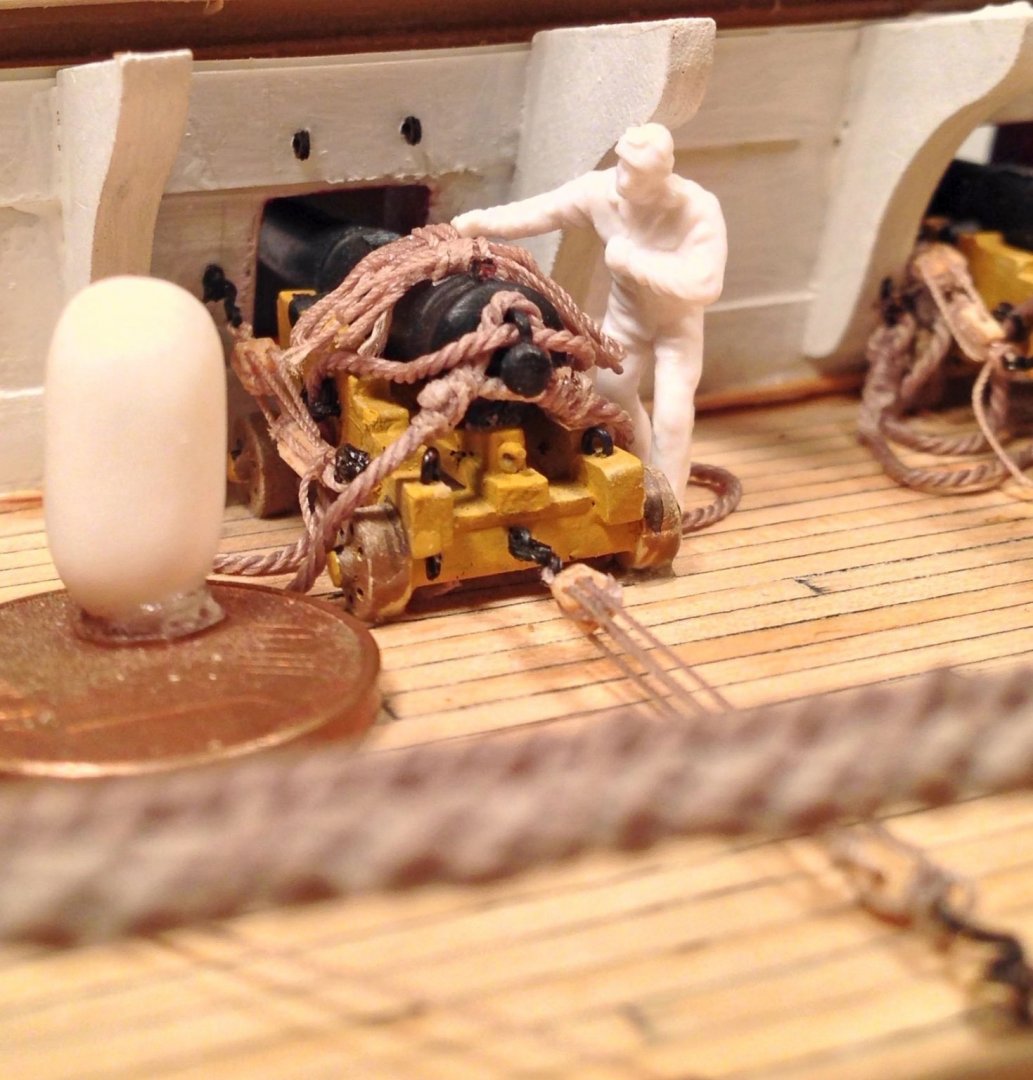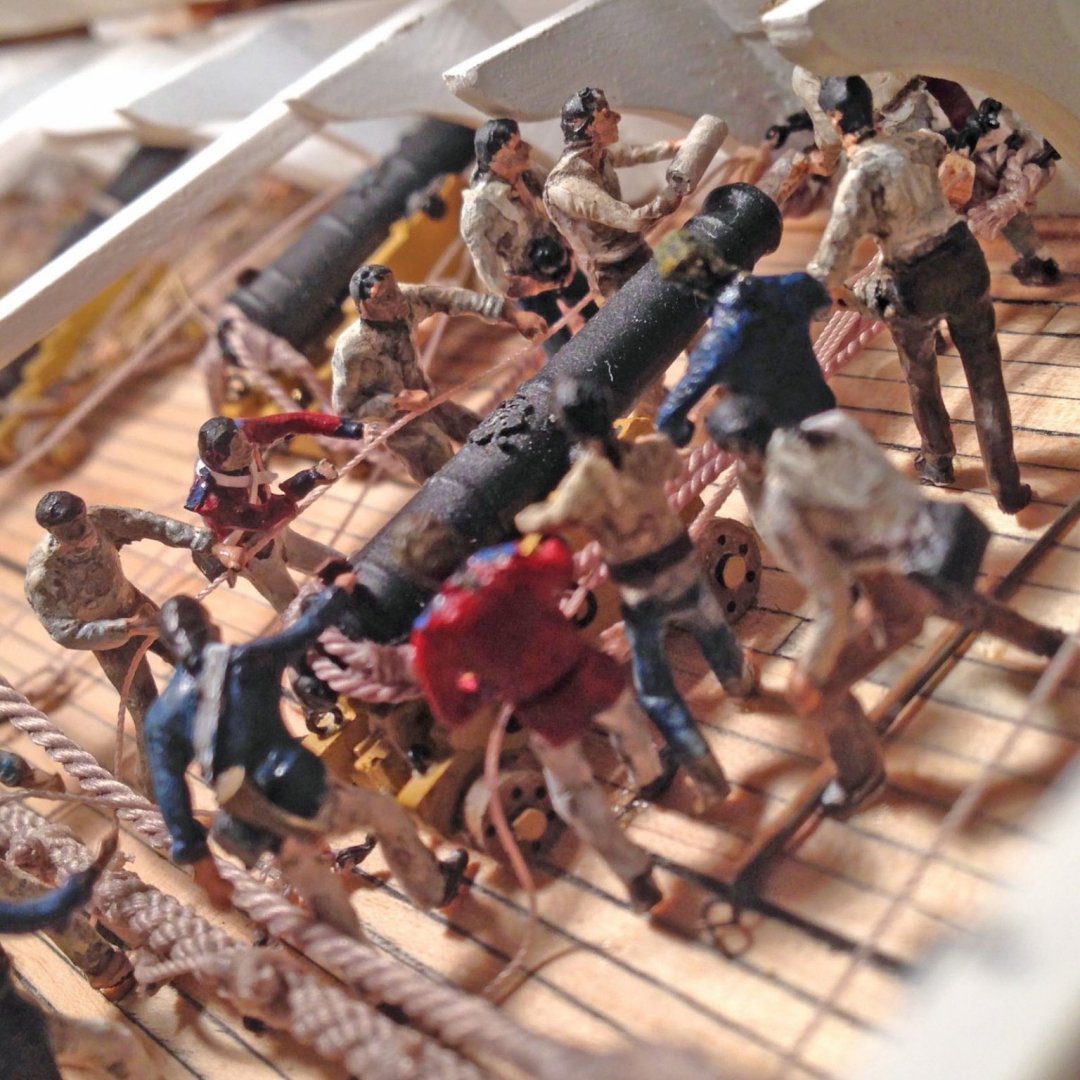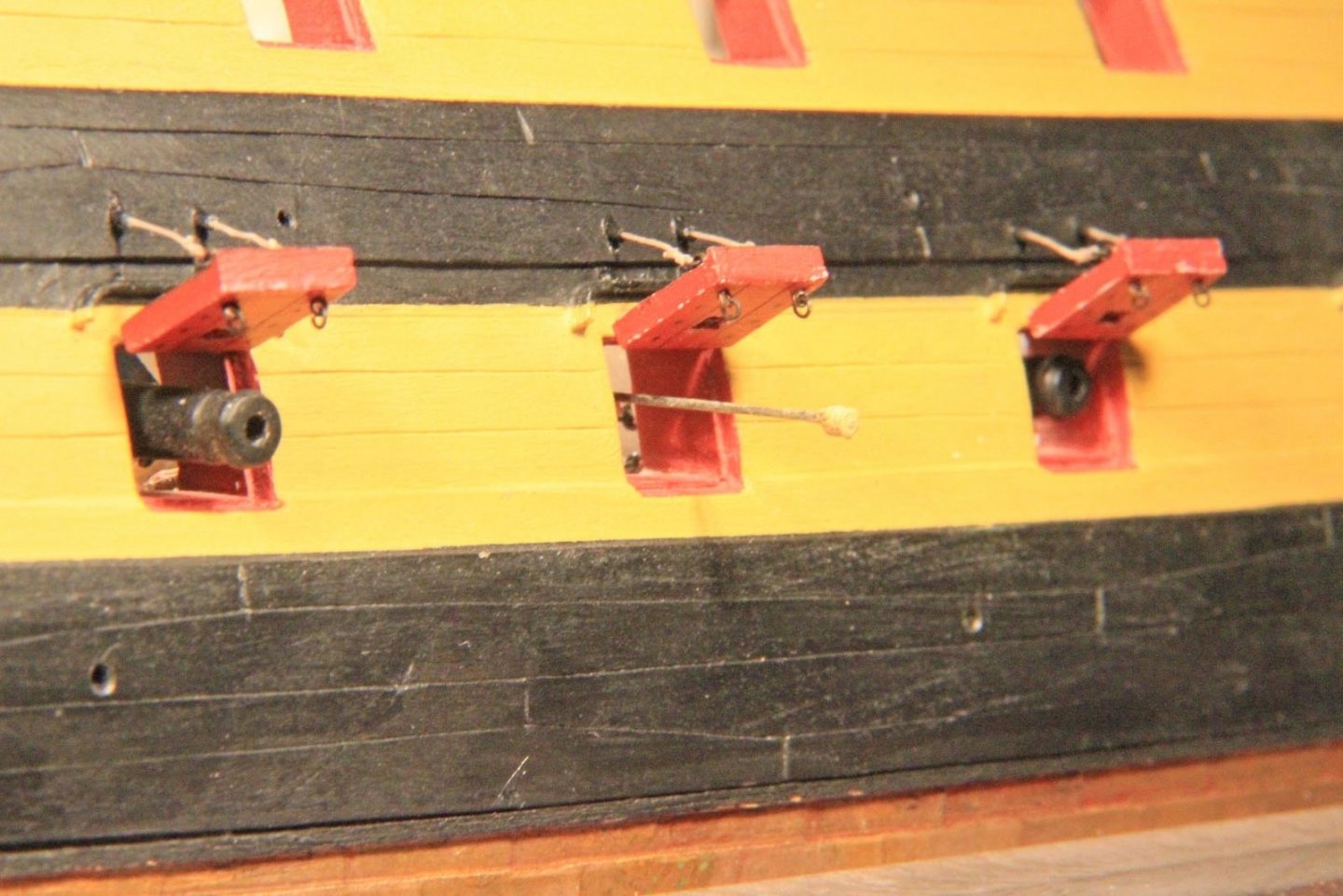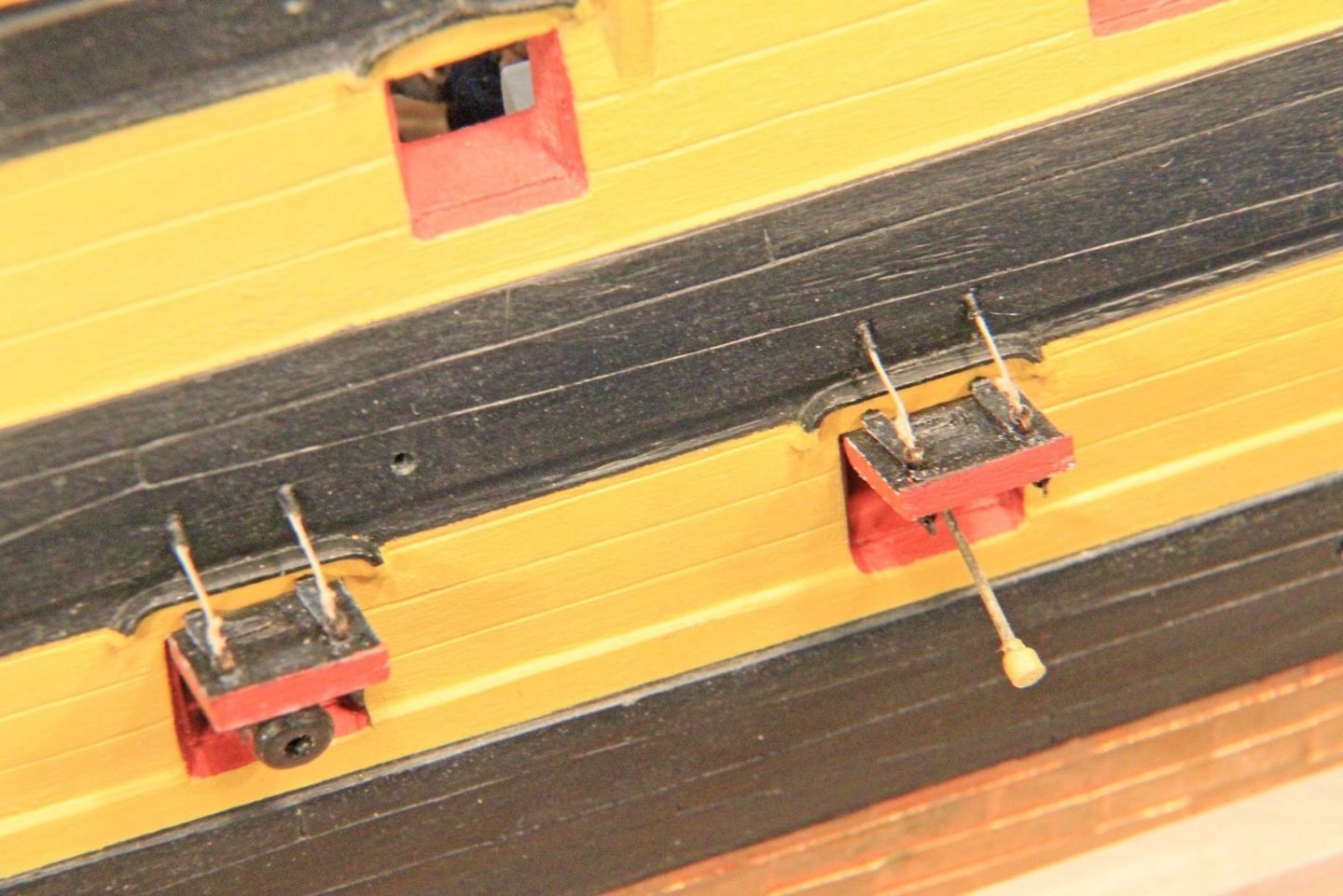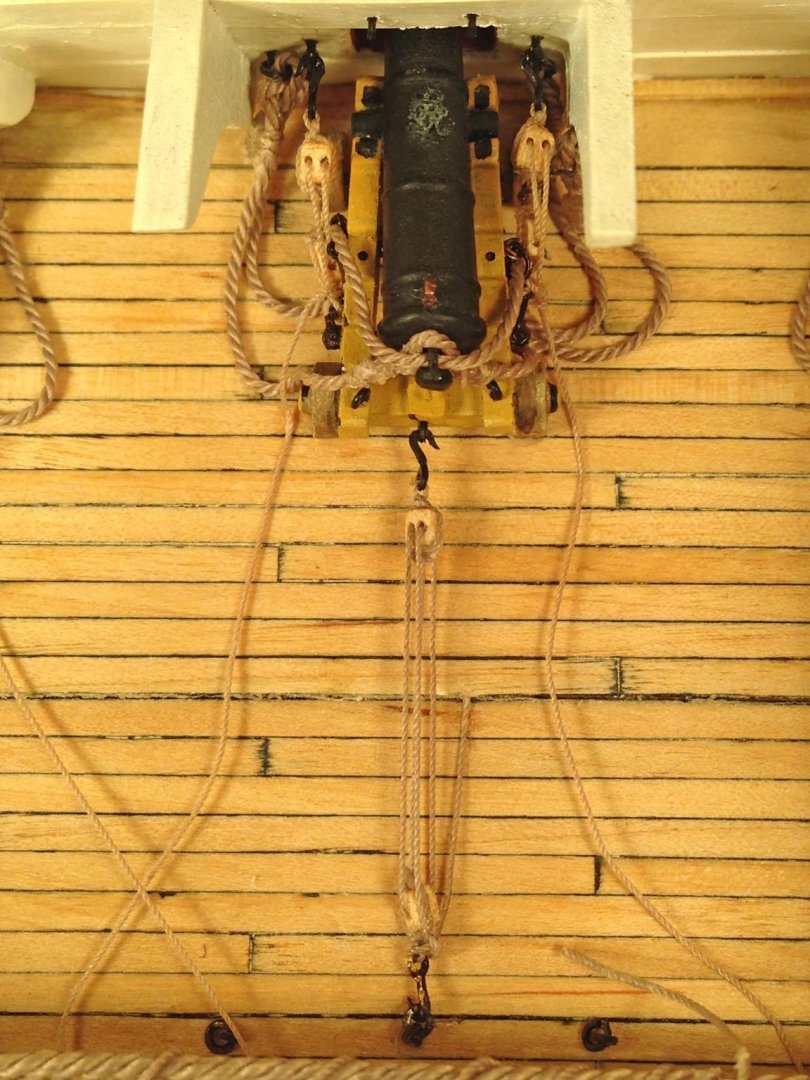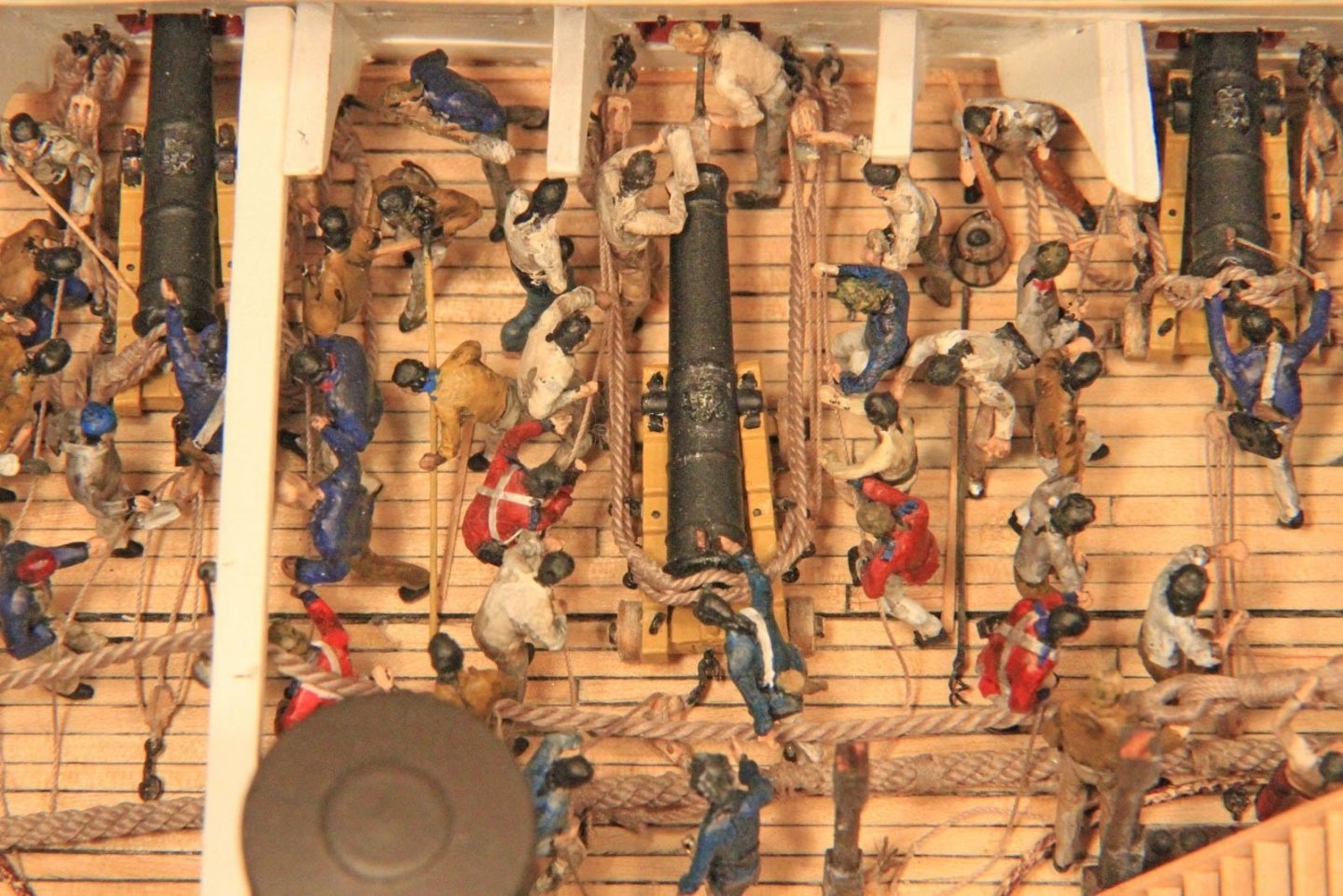-
Posts
2,417 -
Joined
-
Last visited
Content Type
Profiles
Forums
Gallery
Events
Everything posted by dafi
-
Both the plans as build and from 1788 shoe no difference in height from the deck to the platform of the beakhead bulkhead 🙂 So Heller is good there. This platform was a later introduction in the 3rd rate+. The step in P. was introduced in 1920 when the bow was complöetely reconstructed, eliminating the round bow of 1816. Even though Heller orientated the model on the appearance of 1920-1960 they got this detail and the missing side entrance right! Oh my God they got bashed for that when I started building this kit 😉 XXXDAn
-
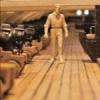
48pdr cannon
dafi replied to Thanasis's topic in Discussion for a Ship's Deck Furniture, Guns, boats and other Fittings
On top of it all writing are computer based letters 😉 Oh, I love the look of the low rider scene, my friend has a car like this ... 😆😆😆 XXXDAn -

Carriage Gun Rigging
dafi replied to Dr PR's topic in Discussion for a Ship's Deck Furniture, Guns, boats and other Fittings
Thank you Morgan, one can nicely see the pair of two holes in the front that could have been used for fixing the horn/breast. What you believe to recognize as horn is in my opinion another wrecked cheek in the background, see the pictures above with the guns on the Euro-pallet. But what was the side cleat for? Keeping the breeching line clear? Keeping clear of hanging knees? XXXDan -

Carriage Gun Rigging
dafi replied to Dr PR's topic in Discussion for a Ship's Deck Furniture, Guns, boats and other Fittings
-

Carriage Gun Rigging
dafi replied to Dr PR's topic in Discussion for a Ship's Deck Furniture, Guns, boats and other Fittings
Completely agree 🙂 Just looked at my archive and found two pictures with marks that could come from cleats and checks: Two holes in the front of each carriage´s cheek and some change of color where a cleat could have been on the side. Make up your on mind upon this 🙂 -

Terminology help please: renard de navigation and renard de présence
dafi replied to Sandra's topic in Nautical/Naval History
-

Carriage Gun Rigging
dafi replied to Dr PR's topic in Discussion for a Ship's Deck Furniture, Guns, boats and other Fittings
Thank you Alan and Gary. Comparing the drawing of Rivers and the artifact of St. George the position of the bolts is quite the same. Have to look my other pictures for the traces of the cleats. Even though Rivers does not show these, any thoughts about that? Also funny that the St. George carriage appears to have shades of red and ochre. Were they overpainted once? Was there already any research about the color? And another question: What was the iron pin for? What else served the eyebolt that it is stuck in? XXXDAn -

Carriage Gun Rigging
dafi replied to Dr PR's topic in Discussion for a Ship's Deck Furniture, Guns, boats and other Fittings
Dear Alan, also thank you for the hint for the 2 eye bolts. It is a reminiscence upon the carriages displayed in Portsmouth 😉 I had a look into my sources. First of all William Rivers Gunner of the Victory does not display these ones 🙂 Also the best hint are always the artifacts, one of the best is Thorsminde St. George, nothing to be seen too 🙂 All other contemporary plans or drawings of 1800 +/- do not show them either. Drawing of the HMS Venerable from NMM. The confusion starts after 1820+, where these eyebolts start appearing in paintings and photographs. Also the french heavy guns had these eyebolts. As seen for the sources approx. 1800 I will omit these bolts confidently on my Victory 🙂 All the best, Daniel -

Carriage Gun Rigging
dafi replied to Dr PR's topic in Discussion for a Ship's Deck Furniture, Guns, boats and other Fittings
Hello Alan, thank you for the feedback. The preventer breech line was installed on my model at the times as Goodwin has reported on this very convincingly and that all 24 and 32 pounders should have one. Also it was installed on the ship in Portsmouth. But as quite often he lacked the sources. At least me and many others did not find a final conclusion. Here are the few hints for that topic: David Steel in 1796 "Art of rigging" states this: Sea-Gunners Vademecum von Robert Simmons, Verlag Steel and Company, 1812 But with these sources I did not find out if this was for action or bad weather. Saumarez on the Orion ordered "extra breech ropes" to be fitted before a storm in 1798. Harland also describes this use. In 1826 Johann Wilhelm David Korth shows how to link multiple guns in his book "Schiffbaukunst" John Masefields mentions the preventer ropes for action in "Sea life in Nelsons time" but this was only in 1905 ... https://archive.org/details/sealifeinnelsons00maserich/page/n61/mode/2up?view=theater page 39 Also the captain of the Little Belt reports of double breeching lines in 1811 but this was for the double shotted carronades. https://ia600404.us.archive.org/8/items/cihm_20959/cihm_20959.pdf Also in 1855 Sir Howard Douglas "A treatise of Naval Gunnery" mentions on page 415 the preventer breeching rope on the carronades of the Shannon. Also have a look at the lay of the breeching rope in the first picture, it is layed the other way possibly for more flexibility. I think this was changed ever since I took the picture - as was the messenger 🙂 My believe is that this is based upon Nares in 1862, otherwise I did find no mention of this fact yet. Does anybody has further sources upon these topics? Especially for the preventer breeching lines for the big 24 and 32 pounders in 1805. XXXDAn PS: One picture still giving me some confusion is the quarterdeck of the Venurable. Look at the double (?) breeching line on the larboard guns. These are omitted on the starboard side ... -

Carriage Gun Rigging
dafi replied to Dr PR's topic in Discussion for a Ship's Deck Furniture, Guns, boats and other Fittings
Here are the results of some of my research. Even though the preventer breeching line - as propagated by Goodwin - is still quite doubtful to me, I tried some different ways for the tackles as shown already in the contemporary sources mentioned above. First was to determine the length the tackle has that is really needed for the full compliment of gun crew pulling on it. In my opinion very important: Give the tackles stopper knots at the backwards blocks, the carriage or the cascabel if none of the crew holds it! Otherwise the gun will run loose ... Also all trials of arranging the tackles will be useless in a minute or after the first wave. Also do look that the rope has a realistic slack in it. Often seen are tackles coming out of the unsecured block and running in a straight line into a flemish eye, no way of reproducing that in real life 😉 Here are my favorites. V1 or V2 are for "prepared for action", V3 and V4 much more for run out but secured guns. V1 tackles laid in flakes beside the gun, keeps clear the passage behind the gun V2 tackles laid in flakes behind the gun, keeps them clear the breeching line and in position for the crew to grab it. V3 tackles laid in flakes over the barrel, gun run out but secured, as seen today on Constitution V4 tackles laid in flakes over the barrel as V3, but with a seizure to keep it arranged That is the version I opted for in my display as these guns are secured but run out and it keeps clear the floor. Also already discussed how much the sponge and rammer point out the port, just see here: And action 🙂 XXXDAn -
Longridge and Heller describe an anachronistic version, also this was shown in P. untill some years ago. There the line with the block is kept clear the hull with an iron bracket and this is only post Trafalgar if I remember well. I think the bishop version is closer to Trafalgar but it should be researched again. Perhaps Lees tells something It could be, that the block was quite near the hull, but the hanger on the yard was much longer. XXXDAn
-
Message for John Walker: Can you please try to contact me here in a PM? All the best, Daniel
-
Great work, Bill, love it! As Kevin asked for the copper color scheme: Blank as Bill´s copper it only is if polished 🙂 As for my resaerch, the greenish color just appears if copper is on the air, like in the drydock. Usually in the harbor the copper gets a brownish color. Usually with all kind of weed on top. If sailing the abrasion of the water molecules give a pinkish (!) appearance to the "delight" of the most model makers 😉 So basically on can show on the model, what happened last to the ship. Was it in harbor or was it sailing. In some test pieces I opted for a mixture of brown and pink for underneath the water, for a bright pink on the waterline and a very thin greenish erea where wind and weather meet. All the best, Daniel PS: Some more infos about copper and aging here in German, but one can use the automatic translator on the left bottom.: https://www.segelschiffsmodellbau.com/t588f643-Kupferung-im-Original.html https://www.segelschiffsmodellbau.com/t3568f804-Patina-von-Kupferteilen.html https://www.segelschiffsmodellbau.com/t3567f804-Kupferung-Darstellung-von-Naegeln-im-kleineren-Massstab.html
-
Not all problems with the Heller instructions are mistakes but anachronisms due to advanced research today. M24 is shown here with a kind of three-legged rope, as it was some years ago still attached to a three-legged iron structure to keep it clear the hull. It was later realised that this was introduced only much later and today shows a single Rope fixed on the hull. Same goes to the 2 eyebolts near the cutwater on the bow. Those ropes are omitted today but the bolts were still visible until the last restoration. Are they still there? Great work on the plates, looks like I was right to tempt you 🙂 XXXDAn
-
Hllo Bill, sorry to be absent that much, had some sad family business to take care of. The batten that finishes the copper was done in mid february 2011. Have a look, I have only restricted internet here in the Austria´s mounains. XXXDAn
-
Hello Pete , sorry for the late reply. Yes the family is safe and sound even thogh my brother in law just lives 1,2 km from this infamous earth slide that went throug the international media. He was very lucky, even being that near, hiss house did not even suffer a water stain. But the area was build upon sand - quite biblical - and one one of the facilities that were hurt was a castle, standing there for centuries ... XXXDAn
-
Now to be serious. I do not want to interfere into your build, but as you ask questions and when I see some realistic potential, I then will tempt you, but I will never disrespect your way of building. Just tell me to stop in a PM, be assured I will respect 🙂 XXXDAn
-
I am on the go since 12 years and funnily you most possibly will overtake me at your month 3 ... Thats why I am trying to distract you 😉 XXXDAn
-
Still tempting you: As you like the blanc rigols, did you already consider to plank the bottom with real copper? With the tiffany self adhesive copper tape it is not a too big task. Stuff is quite cheap and the effect great. Measure if you need the 4,0 mm or 4,4 mm tape and try out on a piece of plastic. That you painted already is a good base, so you do not have black flashing through eventual gaps 🙂 All the best, Daniel
About us
Modelshipworld - Advancing Ship Modeling through Research
SSL Secured
Your security is important for us so this Website is SSL-Secured
NRG Mailing Address
Nautical Research Guild
237 South Lincoln Street
Westmont IL, 60559-1917
Model Ship World ® and the MSW logo are Registered Trademarks, and belong to the Nautical Research Guild (United States Patent and Trademark Office: No. 6,929,264 & No. 6,929,274, registered Dec. 20, 2022)
Helpful Links
About the NRG
If you enjoy building ship models that are historically accurate as well as beautiful, then The Nautical Research Guild (NRG) is just right for you.
The Guild is a non-profit educational organization whose mission is to “Advance Ship Modeling Through Research”. We provide support to our members in their efforts to raise the quality of their model ships.
The Nautical Research Guild has published our world-renowned quarterly magazine, The Nautical Research Journal, since 1955. The pages of the Journal are full of articles by accomplished ship modelers who show you how they create those exquisite details on their models, and by maritime historians who show you the correct details to build. The Journal is available in both print and digital editions. Go to the NRG web site (www.thenrg.org) to download a complimentary digital copy of the Journal. The NRG also publishes plan sets, books and compilations of back issues of the Journal and the former Ships in Scale and Model Ship Builder magazines.

